Summer Palace - Beijing, China
Qing Dynasty Imperial Garden
The Palace of parting clouds

The Summer Palace a Unesco World Heritage Site is an area of lakes, gardens and palaces near Beijing. It was an imperial garden in the Qing Dynasty. The majority of the land is covered by Longevity hill and Kunming Lake.
 View of the Palace over lake Kunming
View of the Palace over lake Kunming
Built by emperor Qianlong in 1750 to celebrate his mother’s birthday, it was later used as a garden where emperors and empresses would escape the heat of Beijing’s summers.
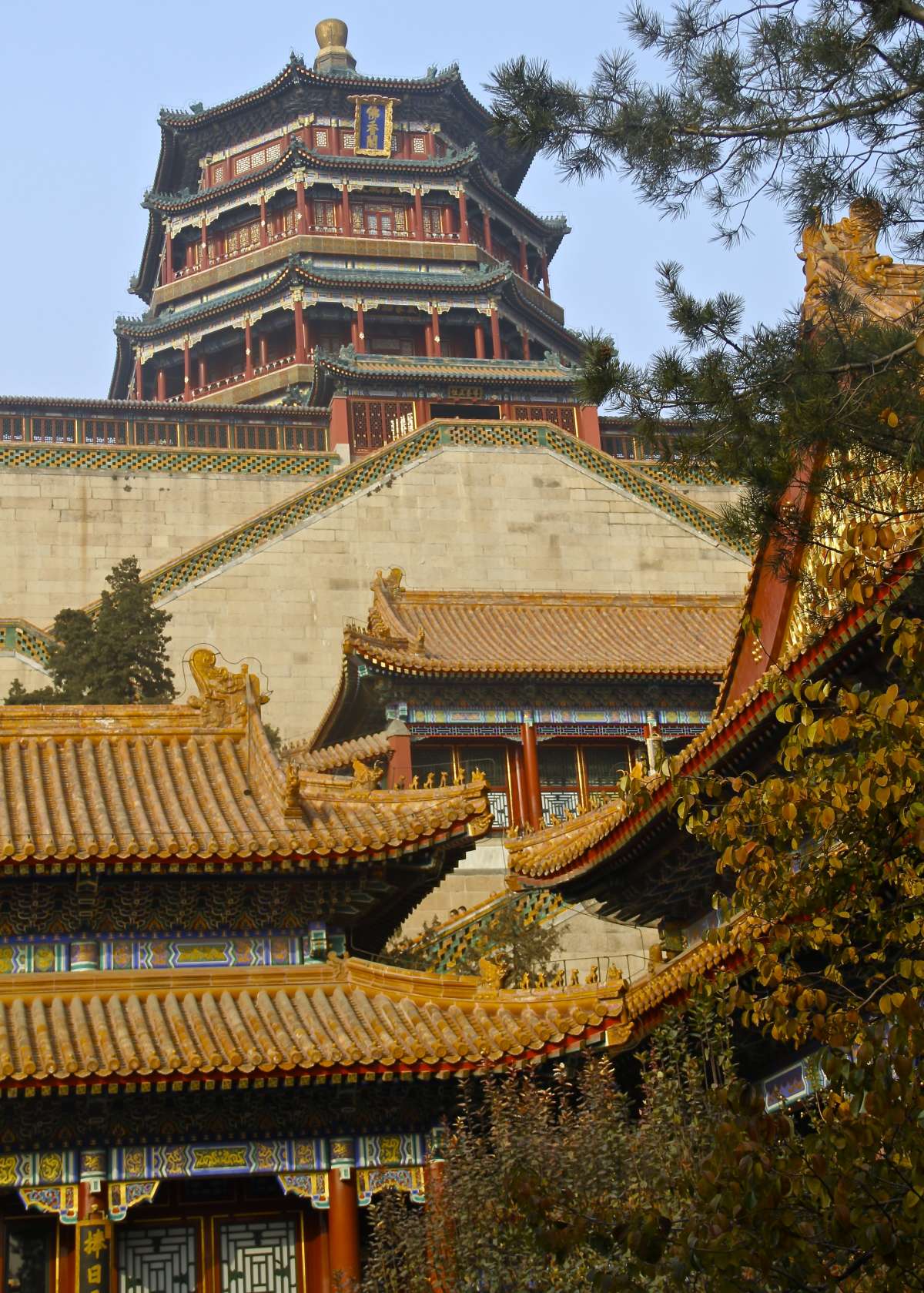 Palace of Parting Clouds with it's golden roof which were only used for royalty
Palace of Parting Clouds with it's golden roof which were only used for royalty
 Pavillions and weeping willows
Pavillions and weeping willows

The palace covers a bit over 700 acres of land featuring Kunming lake, temples, halls, pavilions, corridors, towers which are decorated with fine stone, bronze sculptures and feature paintings, all amongst a garden of ancient pines and cypress trees.
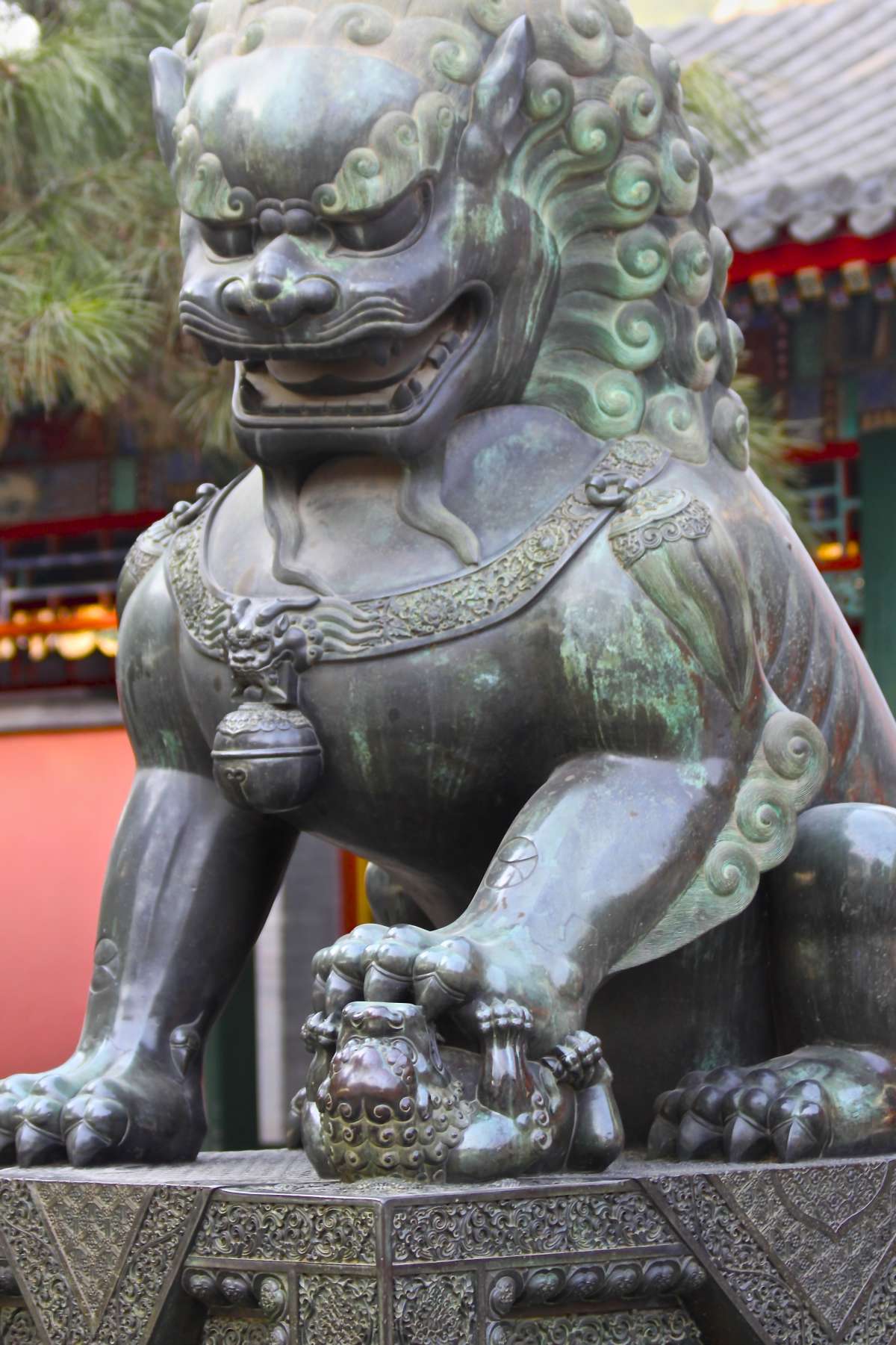 Foo Dog and Cub
Foo Dog and Cub
 Female Foo Dog holding her cub
Female Foo Dog holding her cub
 Bronzed Foo Dog
Bronzed Foo Dog
some of the bronze statues adorning Summer Palace. Several foo dogs are located around the grounds. Foo Dogs also known as Guardian lions were thought to protect the building from harmful spiritual influences.
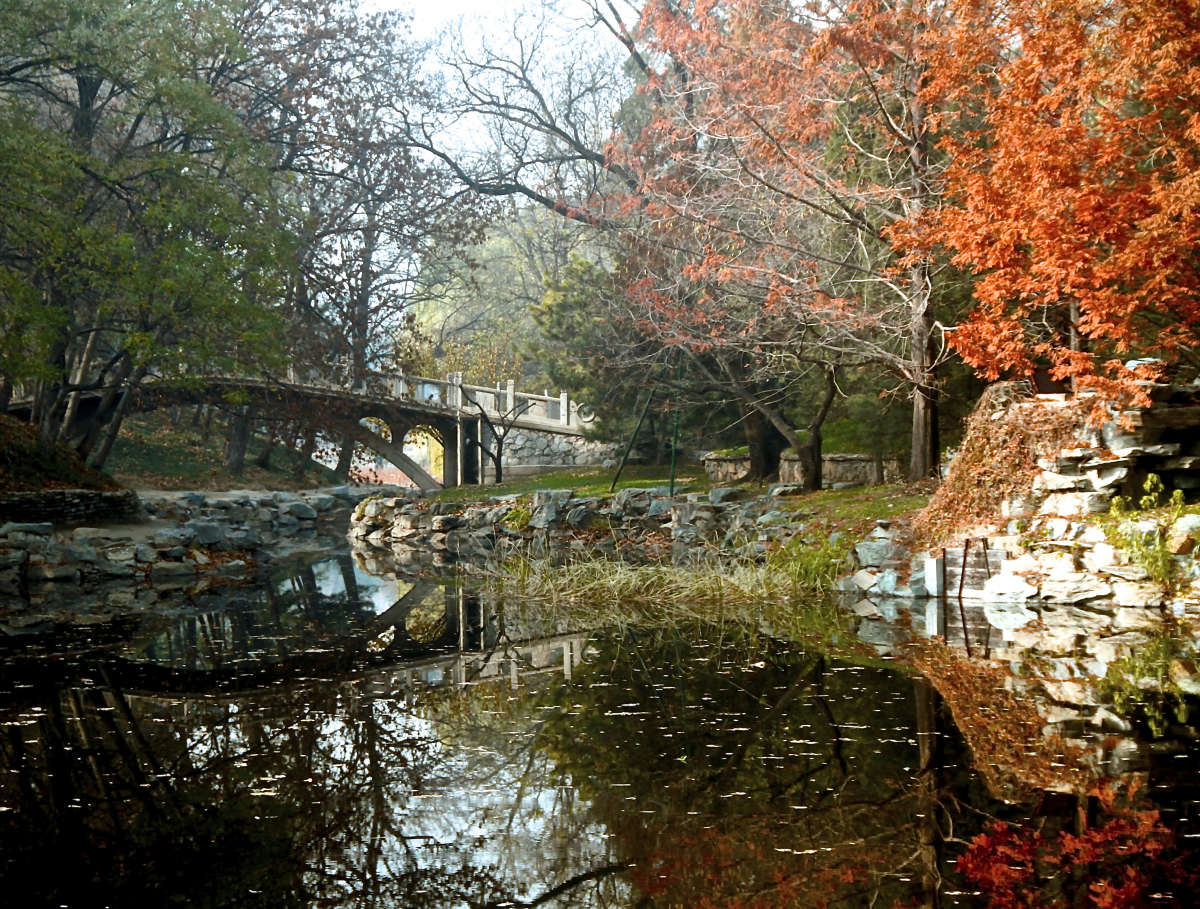 One of over thirty bridges found at Summer Palace
One of over thirty bridges found at Summer Palace
 Paved walkways meander though out the grounds
Paved walkways meander though out the grounds
Unesco declares the Summer Palace "a masterpiece of Chinese landscape garden design". The natural landscape of hills and open water is designed with many walkways, bridges and pavilions offering places to relax and enjoy nature within Beijing.
 Marble Boat at sunset
Marble Boat at sunset
The Marble boat, also known as the Boat of Purity and Ease, is a lakeside pavilion extending out into Kunming Lake. First erected in 1755 it was made from a base of large stone blocks which supported a wooden superstructure done in a traditional Chinese design. In 1860, during the 2nd Opium War, the pavilion was destroyed. Restored in 1893 and on this restoration, a new two-story superstructure was designed which incorporated elements of European architecture. Like the original the new superstructure is made out of wood but it is painted to imitate marble. Only the wheels on each side are of actual marble.
 Kunming Lake with seventeen arch bridge in the background
Kunming Lake with seventeen arch bridge in the background
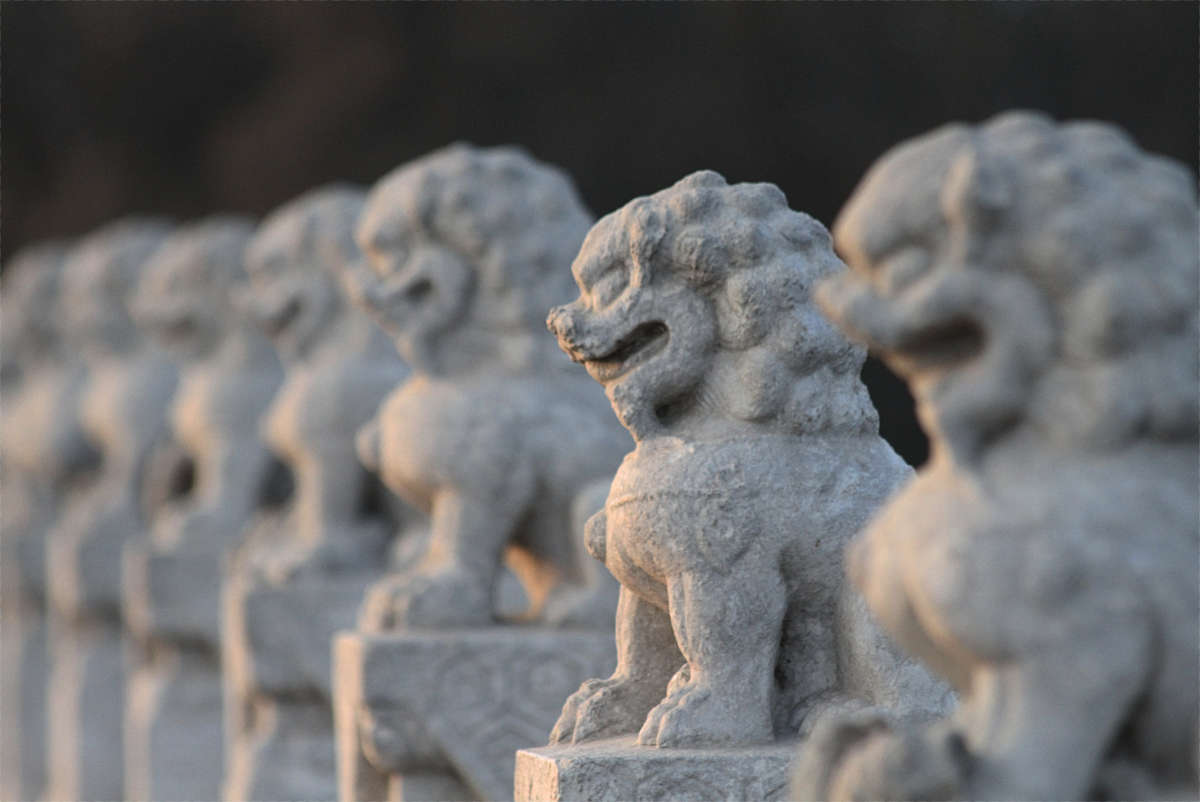 Some of the 544 carved stone lions adorning the Seventeen Arch bridge
Some of the 544 carved stone lions adorning the Seventeen Arch bridge
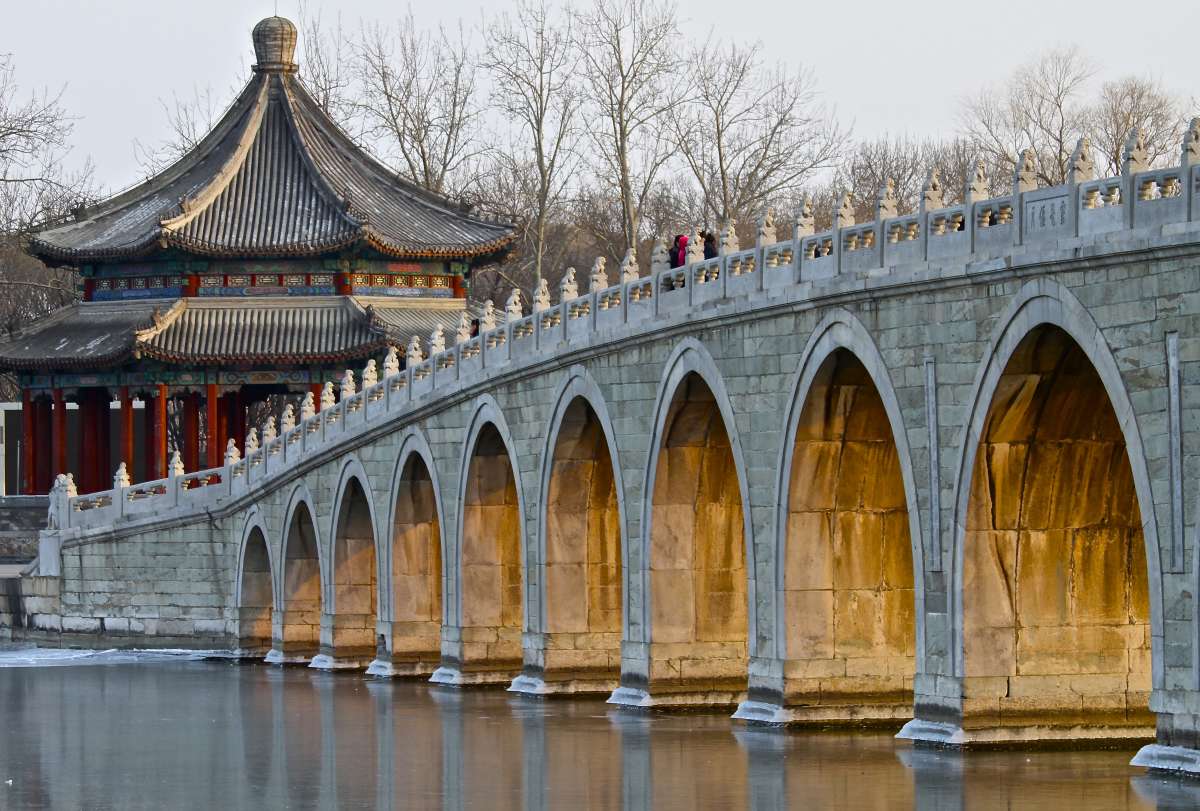 Seventeen Arch bridge in the winter
Seventeen Arch bridge in the winter
Connecting the shore of Kunming Lake and Nanhu Island, the Seventeen-Arch Bridge was built during the reign of Emperor Qianlong. There are over thirty bridges in the Summer Palace with this being the largest with a length of 164 yards.